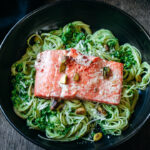Ramp Pesto Pasta with Seared Salmon
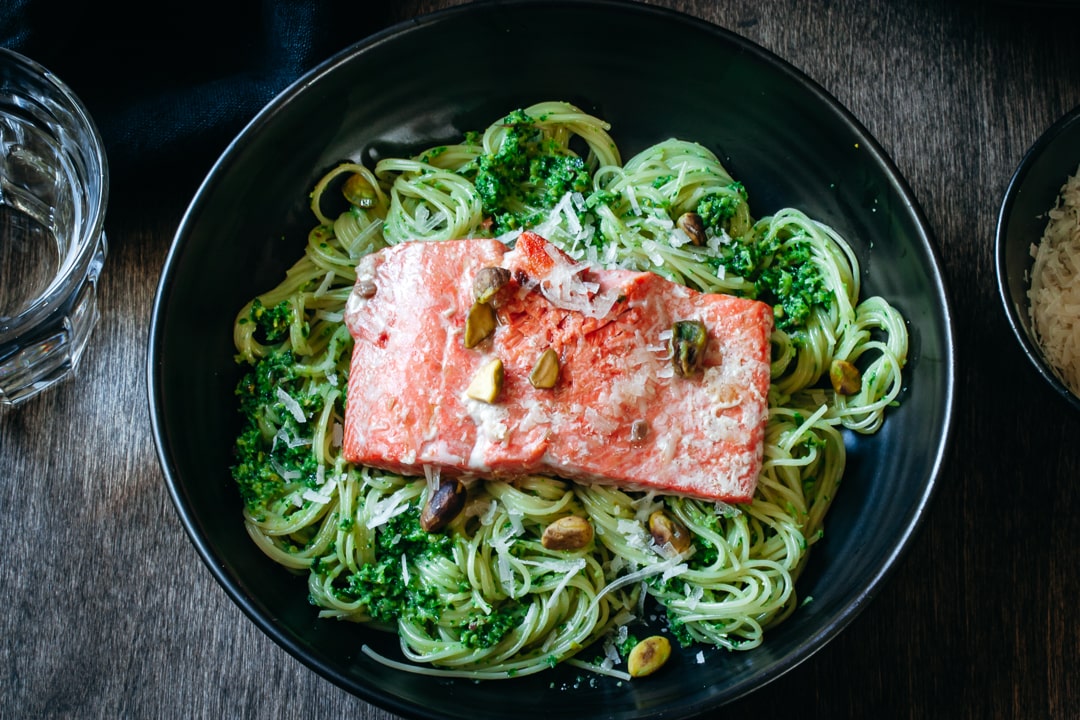
Ramps are a limited edition edible that are the first spring vegetables to make an appearance after a dreary winter and the first to go away, and every year I ignore them. Mostly because ramps are notoriously known for their funky and unwelcoming aroma. Thankfully, I got a little nudge from a farmer this past week to develop a recipe using them, and while the ramps did stink up my refrigerator, I can attest it was worth it.


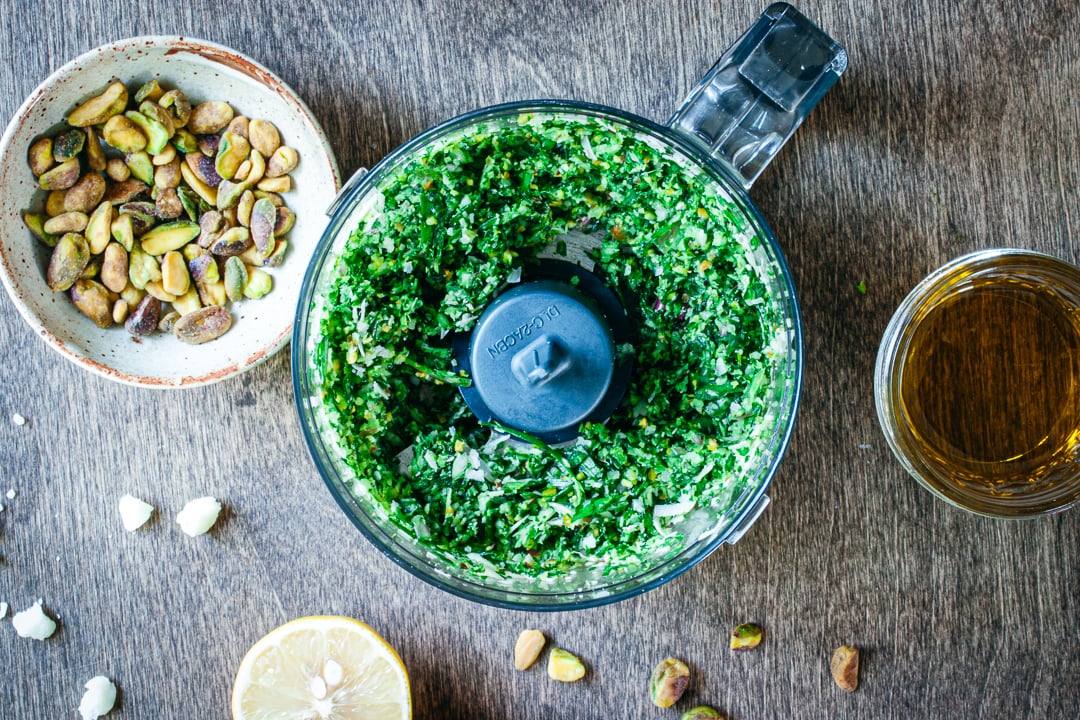
This ramp pesto is reminiscent of a traditional basil pesto recipe with the ratio of nuts to cheese to olive oil. Instead of the traditional combination of pine nuts and parmesan cheese, I used pistachios to complement the ramps and added manchego along with parmesan cheese. The happiest moment occurred when I realized I didn’t have to use garlic in the pesto; no, I can just use ramps. These ingredients are finely chopped in a food processor, and the addition of olive oil and lemon juice creates a smooth consistency. The result is a strongly flavored, garlic-rich pesto perfect for tossing with pasta or serving with spring vegetables.
Adding seared salmon on top of the ramp pesto and pasta was an afterthought. I didn’t want to eat a whole bowl of pasta, though there is nothing wrong with that, and seared salmon seemed like a perfect choice, and it is. The fillets take less than 10 minutes to cook on a stovetop, perfectly complement the ramp pesto, and I had a fully cooked meal in 20 minutes.
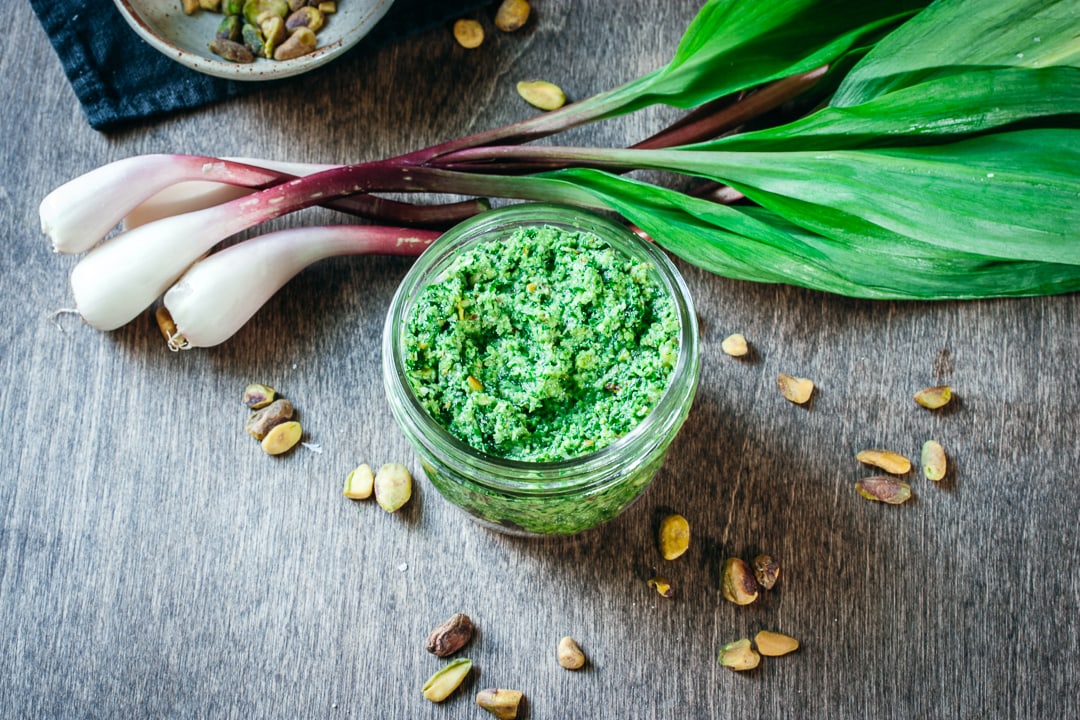
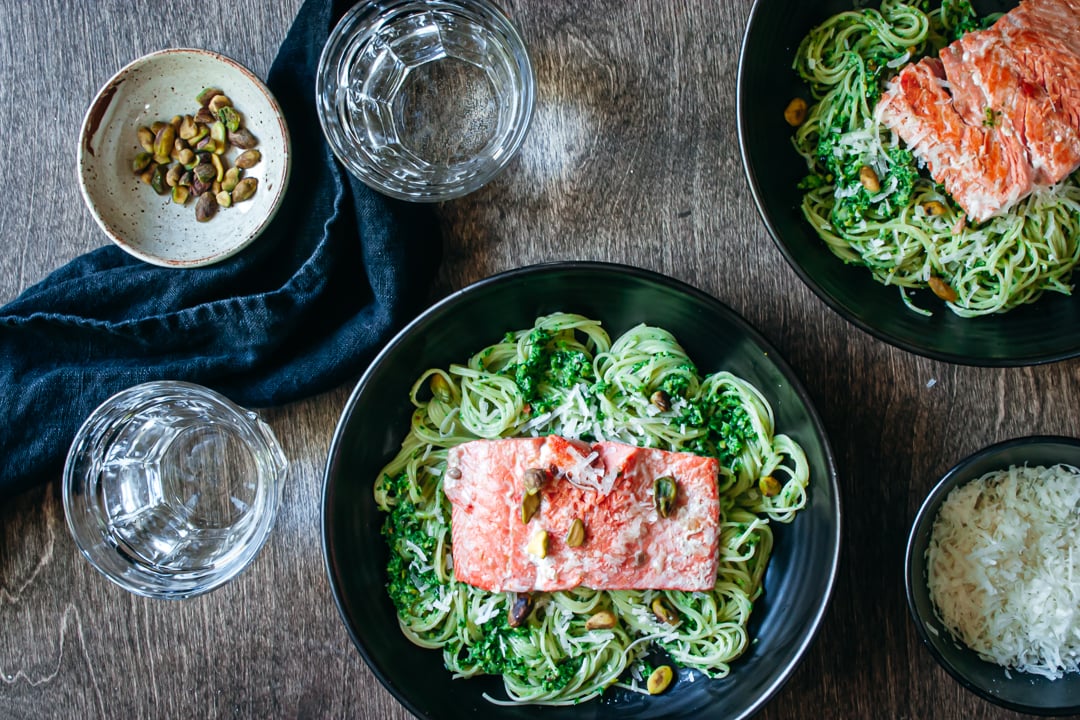
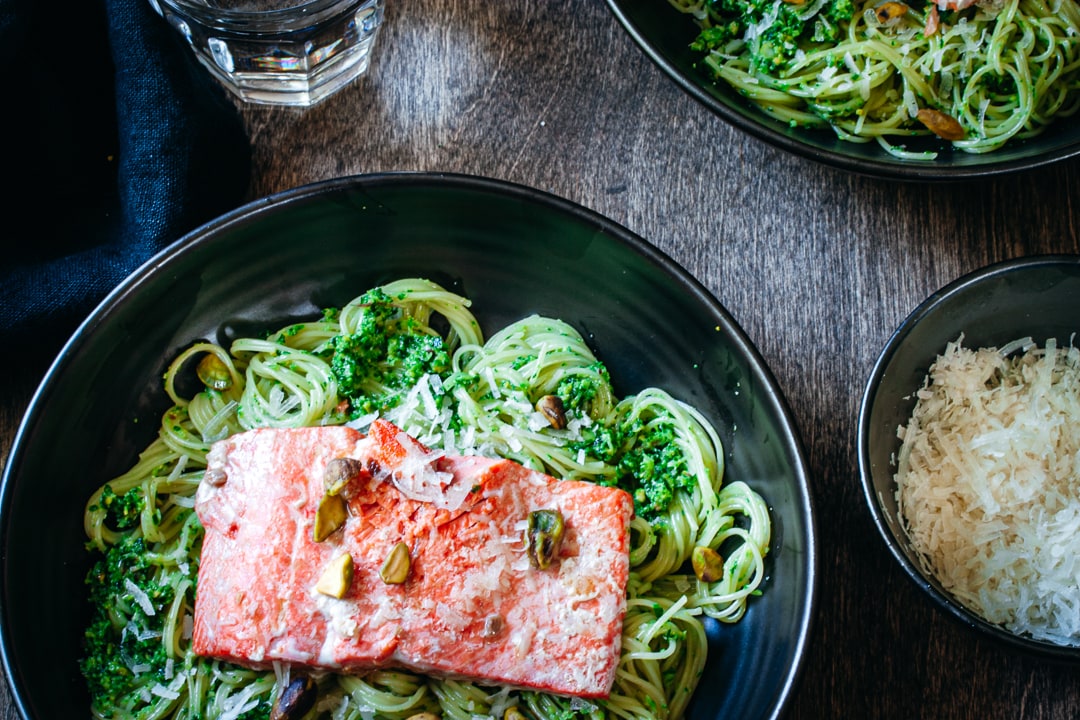
Possible Substitutions for this Ramp Pesto Pasta with Seared Salmon
PISTACHIOS. Almonds work in place of the pistachios.
PASTA. Serve the salmon and pesto without pasta for a lower-carb, lighter version.
SALMON. In place of the salmon, prosciutto, or any smoky meat pairs well with this pesto. For a vegetarian version, edamame is an excellent substitution for salmon.
Before you start: Tips for Cooking the Salmon
Here is a foolproof method for searing salmon that you will use again and again. The key is to sprinkle a bit of salt onto the skillet before adding the salmon to prevent the skin from sticking to the bottom of the skillet, while lightly pressing down on each fillet prevents the skin from buckling. There is no flipping in this recipe; simply cover the salmon with a lid and let it cook. The skin prevents the salmon from overcooking.
More Spring-Inspired Recipes to Try
- Stovetop Asparagus with Pistachios and Herbs
- Spring Grilled Cheese with Charred Scallions
- Decadent Rhubarb Frangipane Shortbread Bars
- Egg Salad Sandwiches with Peppery Watercress
Pasta with Ramp Pesto and Seared Salmon
The ramp pesto is a mix of ramps, pistachios, nutty cheese, lemon, and olive oil that perfectly complements the pasta and seared salmon. This is a quick and easy meal that comes together in 20 minutes!
- Prep Time: 10 minutes
- Cook Time: 10 minutes
- Total Time: 20 minutes
- Yield: 2 servings 1x
- Category: Main Dish
- Method: Stovetop
- Cuisine: American
Ingredients
For the pasta:
- 1/3 pound spaghetti, or desired pasta shape
For the ramp pesto:
- 1 bunch (100g) roughly chopped ramps
- 1/4 cup (30g) shelled pistachios
- 1/2 teaspoon kosher salt
- 1/8 cup (13g) grated parmesan cheese
- 1/8 cup (10g) grated manchego cheese
- 3 tablespoons (40g) extra-virgin olive oil
- 1 tablespoon lemon juice, about 1/2 of a lemon
For the Salmon:
- 2 tablespoons olive oil
- 2, 4-ounce skin-on salmon fillets
- kosher salt
Instructions
- Boil the water. Fill a large pot with water and bring to a boil over high heat. If the pot boils before you are ready to cook the pasta, turn it down until you are ready (step 5).
- Make the ramp pesto. Add the ramps, pistachios, salt, and cheeses to a food processor and pulse until finely chopped. Add the rest of the ingredients and puree the mixture until smooth. Season the mixture with salt to taste.
- Cook the salmon. Bring the salmon to room temperature and press the salmon fillets between two paper towels to dry the surfaces. In a 10-12 inch skillet, heat oil over medium heat until shimmering. Sprinkle a little bit of salt onto the skillet to prevent the salmon skin from sticking. Place the salmon fillet’s skin side down in the skillet. Press each fillet firmly in place for 10 seconds using the back of a spatula. Cover the skillet with a tight-fitting lid. Allow the salmon to cook, completely covered, until it registers 110°F (43°C) in the very center for rare, 120°F (49°C) for medium-rare, or 130°F (54°C) for medium, 5 to 7 minutes total. Once cooked to desired doneness, transfer the salmon to a paper towel-lined plate to drain.
- Cook the pasta. While the salmon cooks, generously salt the boiling water and add the pasta. Cook the pasta according to package instructions. Drain the pasta, and toss with the pesto.
- Assemble. Top the pasta with the cooked salmon and serve immediately. Garnish with more cheese and pistachios as desired.
Notes
STORAGE. Store pesto in an air-tight container in the refrigerator for up to 4 days.
MAKE AHEAD. Place pesto in ice cube trays and freeze until solid, about 4 hours. Once frozen, transfer the pesto to a freezer-safe storage bag and freeze for up to 2 months.
Nutrition
- Serving Size: 1/2 of recipe
- Calories: 648 calories
- Sugar: 2.8g
- Sodium: 825mg
- Fat: 39.2g
- Saturated Fat: 6.5g
- Carbohydrates: 28.9g
- Fiber: 5.2g
- Protein: 47.6g
- Cholesterol: 114mg
Keywords: ramp pesto, pesto pasta recipe, ramp recipes, seared salmon

